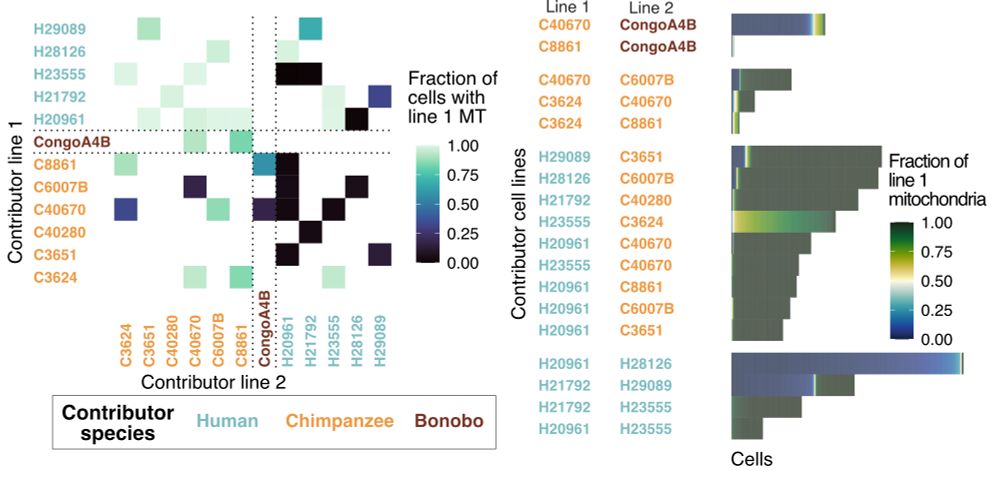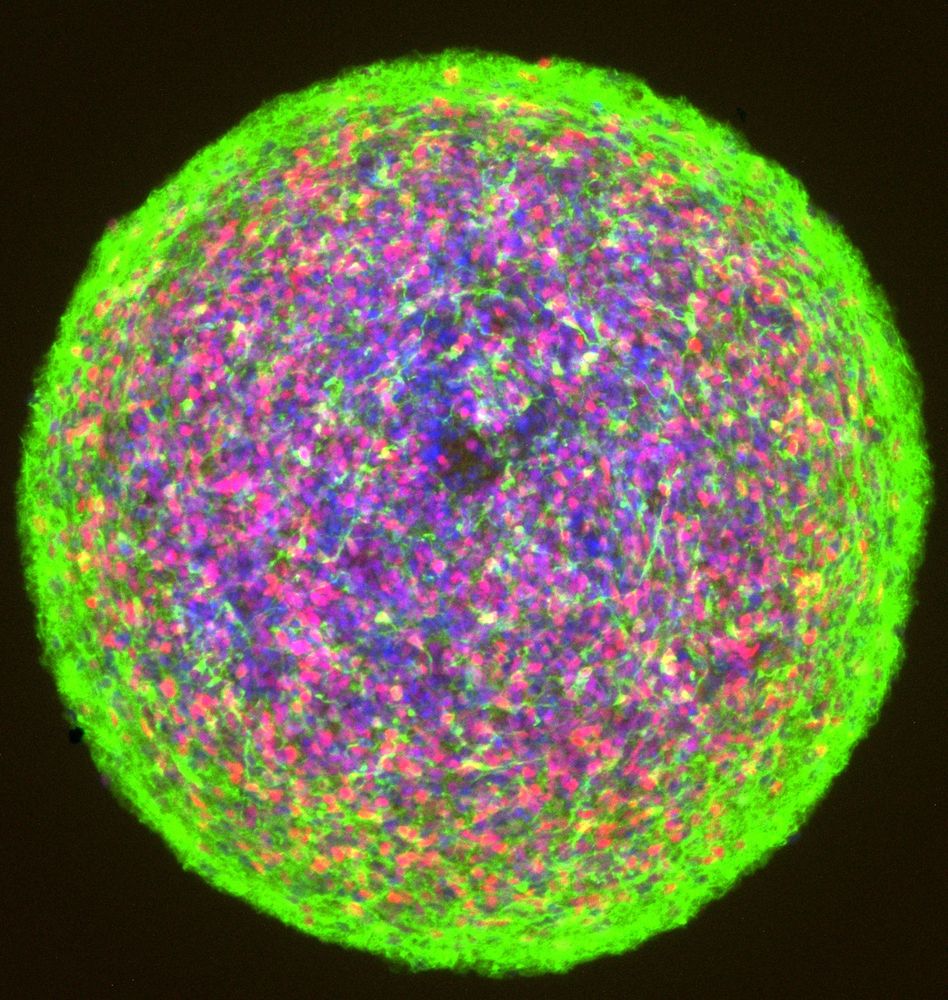Alex Pollen
@brainevodevo.bsky.social
Studying specializations and vulnerabilities of human brain development
This study was supported by NIH funding and an excellent team of collaborators, including @fennak.bsky.social, @mallarinolab.bsky.social, @searslab.bsky.social, Mike DeBerardine, Aunoy Poddar, Miguel Turrero Garcia, and the Paredes, Harwell lab and Berke labs.
November 7, 2025 at 6:06 PM
This study was supported by NIH funding and an excellent team of collaborators, including @fennak.bsky.social, @mallarinolab.bsky.social, @searslab.bsky.social, Mike DeBerardine, Aunoy Poddar, Miguel Turrero Garcia, and the Paredes, Harwell lab and Berke labs.
Collectively, the broad pattern of inhibitory neuron conservation suggests that, on the mammalian timescale, evolution modifies the brain by ‘teaching old cells new tricks’, rather than inventing novel cell types early in development.
November 7, 2025 at 6:06 PM
Collectively, the broad pattern of inhibitory neuron conservation suggests that, on the mammalian timescale, evolution modifies the brain by ‘teaching old cells new tricks’, rather than inventing novel cell types early in development.
Together, we conclude the TAC3 initial class is conserved across placental mammals, but modifies its gene expression and distribution throughout evolution.
November 7, 2025 at 6:06 PM
Together, we conclude the TAC3 initial class is conserved across placental mammals, but modifies its gene expression and distribution throughout evolution.
In adult mouse, we identified a rare subpopulation of Th interneurons which expresses residual Tac2 (TAC3). Using the Allen institute’s Merscope data, we find this rare Tac2-expressing population is spatially restricted to the ventromedial striatum.
November 7, 2025 at 6:06 PM
In adult mouse, we identified a rare subpopulation of Th interneurons which expresses residual Tac2 (TAC3). Using the Allen institute’s Merscope data, we find this rare Tac2-expressing population is spatially restricted to the ventromedial striatum.
Through integrated analysis of adult mouse, marmoset, and human striatal inhibitory neurons, we confirmed the homology of Th interneurons in adult mouse and TAC3 interneurons in the adult primate.
November 7, 2025 at 6:06 PM
Through integrated analysis of adult mouse, marmoset, and human striatal inhibitory neurons, we confirmed the homology of Th interneurons in adult mouse and TAC3 interneurons in the adult primate.
Surprisingly, we find that the population was hiding in plain sight, but disguised by the loss of TAC3 (called Tac2 in mouse) and gain of Th expression, indicating an unappreciated homology between rodent Th and mammalian TAC3 striatal interneurons.
November 7, 2025 at 6:06 PM
Surprisingly, we find that the population was hiding in plain sight, but disguised by the loss of TAC3 (called Tac2 in mouse) and gain of Th expression, indicating an unappreciated homology between rodent Th and mammalian TAC3 striatal interneurons.
Given the conservation of this initial class in Laurasiatherians and marsupials, we next investigate the Glire lineage (rabbit, naked mole rat, rat, mouse), as the population was reported missing in mouse.
November 7, 2025 at 6:06 PM
Given the conservation of this initial class in Laurasiatherians and marsupials, we next investigate the Glire lineage (rabbit, naked mole rat, rat, mouse), as the population was reported missing in mouse.
Although the TAC3 initial class is conserved to marsupials (opossum and sugar glider), we observe turnover of signaling pathway genes across multiple timescales, and an additional migratory destination in Laurasiatherian (pig and ferret) cortex
November 7, 2025 at 6:06 PM
Although the TAC3 initial class is conserved to marsupials (opossum and sugar glider), we observe turnover of signaling pathway genes across multiple timescales, and an additional migratory destination in Laurasiatherian (pig and ferret) cortex
Through integrative analysis, we find that initial classes of inhibitory neurons are conserved across placental mammals. Surprisingly, this conservation includes the MGE-derived TAC3 initial class, which was previously thought to be a primate-specific striatal interneuron population
November 7, 2025 at 6:06 PM
Through integrative analysis, we find that initial classes of inhibitory neurons are conserved across placental mammals. Surprisingly, this conservation includes the MGE-derived TAC3 initial class, which was previously thought to be a primate-specific striatal interneuron population
We begin by performing cross-species analysis of developing initial classes of both striatal and cortical inhibitory neuron populations by integrating single cell sequencing data from 8 mammals, spanning from primates to marsupials.

November 7, 2025 at 6:06 PM
We begin by performing cross-species analysis of developing initial classes of both striatal and cortical inhibitory neuron populations by integrating single cell sequencing data from 8 mammals, spanning from primates to marsupials.
Grateful for @enardhellmannwg.bsky.social labs to host @nkschaefer.bsky.social and exchange ideas about village cell culture and human-specific evolution with experts at LMU Munich, including the Hellman and Enard labs as well as @boyanbonev.bsky.social!
September 24, 2025 at 4:36 PM
Grateful for @enardhellmannwg.bsky.social labs to host @nkschaefer.bsky.social and exchange ideas about village cell culture and human-specific evolution with experts at LMU Munich, including the Hellman and Enard labs as well as @boyanbonev.bsky.social!
We hope that CellBouncer will accelerate population-scale single cell genomic analyses, improve ambient RNA correction, and enable new experimental designs not previously possible.
March 24, 2025 at 10:11 PM
We hope that CellBouncer will accelerate population-scale single cell genomic analyses, improve ambient RNA correction, and enable new experimental designs not previously possible.
Surprisingly, cells with mitochondria from two hominids show evidence for apoptotic pathway induction, reduced mRNA expression, and less efficient processing of polycistronic mitochondrial transcripts, revealing recently evolved incompatibilities in the hominid lineage.
March 24, 2025 at 10:10 PM
Surprisingly, cells with mitochondria from two hominids show evidence for apoptotic pathway induction, reduced mRNA expression, and less efficient processing of polycistronic mitochondrial transcripts, revealing recently evolved incompatibilities in the hominid lineage.
Our analysis revealed that human and bonobo mitochondria typically outcompete those from chimpanzee, but we also identified a fraction of cells where chimpanzee mitochondria win and cells where both mitochondria survive.

March 24, 2025 at 10:09 PM
Our analysis revealed that human and bonobo mitochondria typically outcompete those from chimpanzee, but we also identified a fraction of cells where chimpanzee mitochondria win and cells where both mitochondria survive.
CellBouncer tools were crucial for our study of dopaminergic evolution that included ventral midbrain organoids with up to 17 individuals from 4 species, led by Sara Nolbrant, @jenellewallace.bsky.social, and Jingwen Ding:
www.biorxiv.org/content/10.1...
www.biorxiv.org/content/10.1...

March 24, 2025 at 10:04 PM
CellBouncer tools were crucial for our study of dopaminergic evolution that included ventral midbrain organoids with up to 17 individuals from 4 species, led by Sara Nolbrant, @jenellewallace.bsky.social, and Jingwen Ding:
www.biorxiv.org/content/10.1...
www.biorxiv.org/content/10.1...
For full details on how the tools work, see: bsky.app/profile/nksc...
Picture this: you are running a single cell sequencing experiment and want to incorporate cells from different species, individuals, and maybe even perturbations. You process everything together to save time while reducing batch artifacts. You collect data. What do you do now?

a man in a green shirt is carrying a pink bag
ALT: a man in a green shirt is carrying a pink bag
media.tenor.com
March 24, 2025 at 10:03 PM
For full details on how the tools work, see: bsky.app/profile/nksc...

